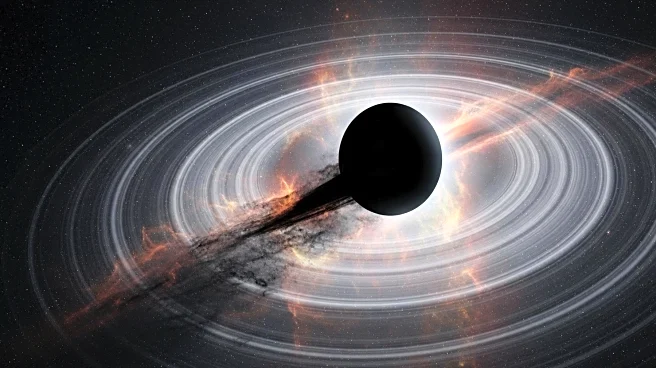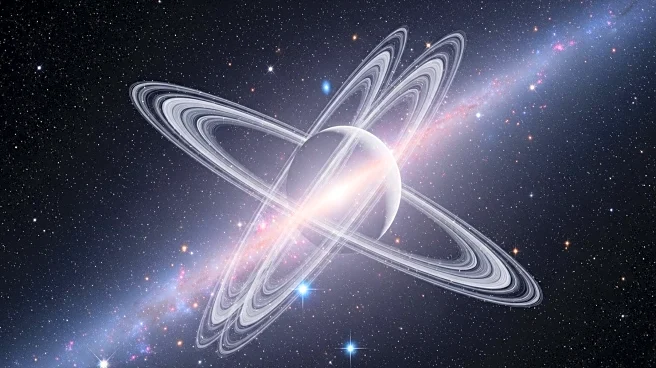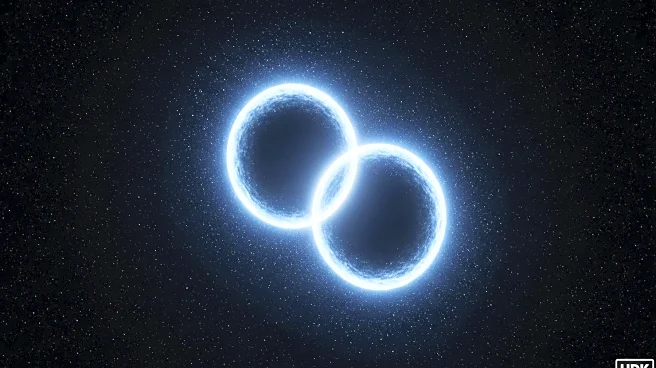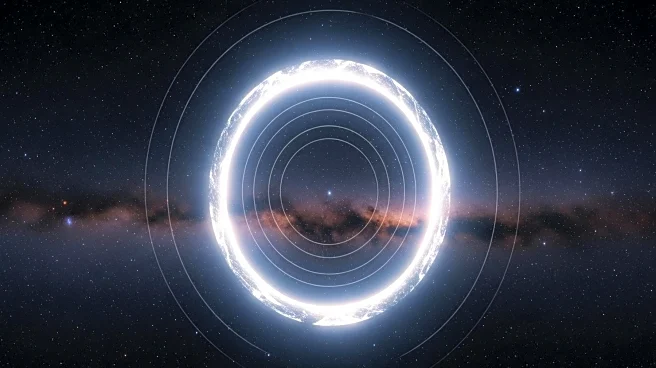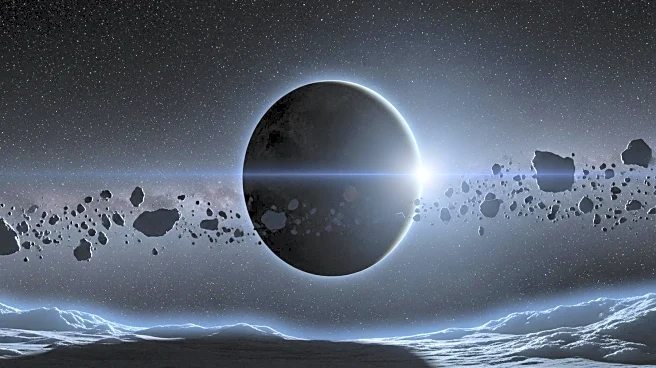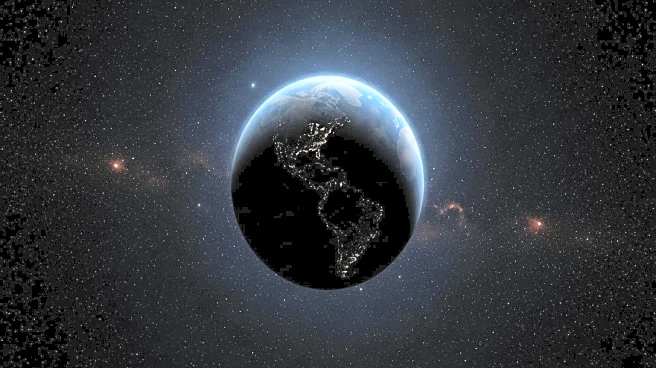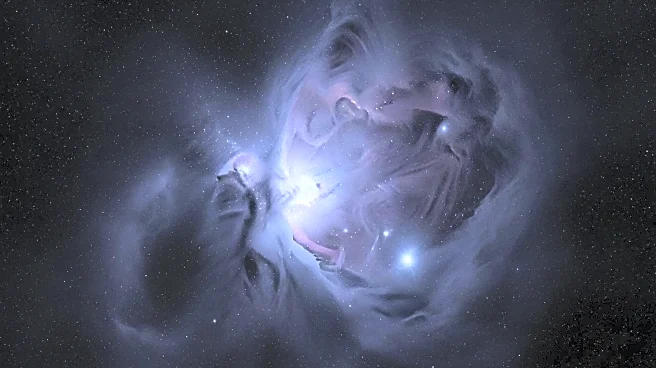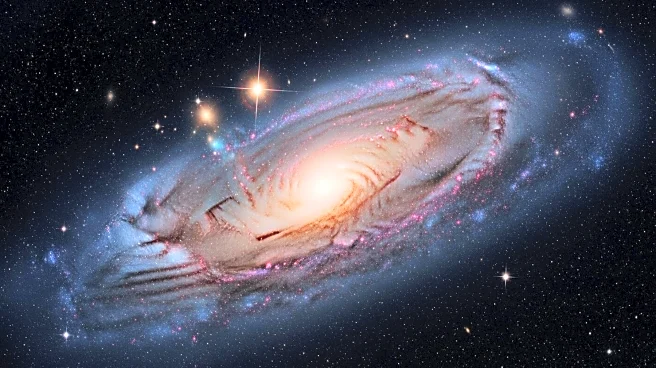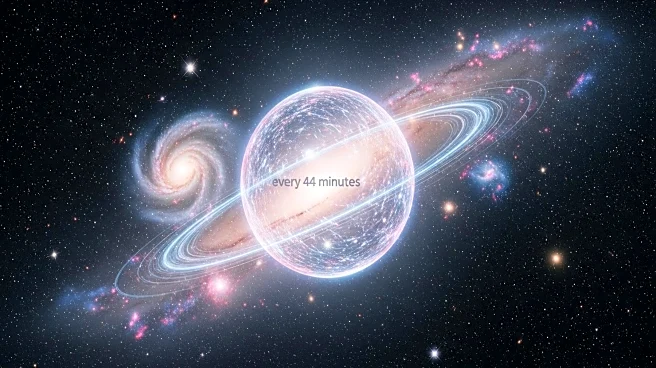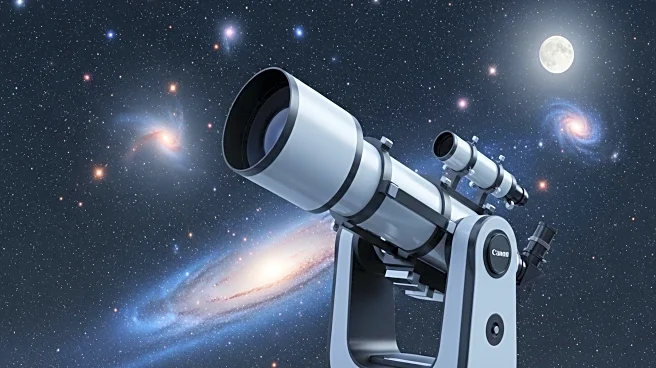What's Happening?
Astronomers have uncovered an enormous double-ringed radio structure billions of light-years away, challenging existing theories of black hole activity. These 'odd radio circles' (ORCs) are vast, faint rings of radio energy surrounding galaxies, detectable only in radio wavelengths. The discovery suggests that these rings may be linked to powerful 'superwinds' driven by activity within spiral host radio galaxies. The source, designated RAD J131346.9+500320, is the most distant and powerful ORC observed, featuring two intersecting rings. This finding was made possible through the RAD@home Astronomy Collaboratory and the Low-Frequency Array (LOFAR) telescope.
Why It's Important?
The discovery of ORCs provides new insights into the dynamics of galaxies and the role of black holes in shaping cosmic structures. These rings may hold vital clues about the co-evolution of galaxies and black holes, offering a deeper understanding of the universe's formation and evolution. The findings challenge existing models of black hole activity, suggesting that galactic winds and interactions with surrounding plasma play a significant role in forming these rare structures. This research could lead to advancements in radio astronomy and the study of cosmic phenomena.
What's Next?
Future research will focus on uncovering more ORCs using advanced facilities like the Square Kilometre Array (SKA) and the Vera C. Rubin Observatory's Large Synoptic Survey Telescope (LSST). These projects aim to provide detailed redshifts and environmental data of host galaxies, helping to piece together the formation and evolution of these mysterious rings. Collaboration between professional astronomers and citizen scientists will continue to push the boundaries of scientific discovery, utilizing cutting-edge technology to explore the universe's deepest secrets.
Beyond the Headlines
The discovery of ORCs highlights the importance of citizen science in advancing astronomical research. It demonstrates the power of human pattern recognition in identifying complex cosmic structures, even in the age of machine learning. This collaboration between professional and amateur astronomers represents a significant step toward unlocking the secrets of the universe, emphasizing the need for inclusive and diverse scientific exploration.
